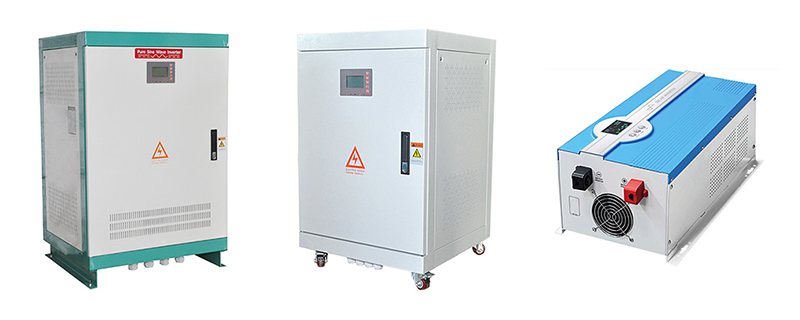Off-grid inverters are designed to work alone and cannot synchronise with the grid. They connect to the property in place of grid power and cannot work in conjunction with it. Off grid inverters must supply power from DC to AC instantly to power the appliances.
There are 8 tips to consider when choosing the right off-grid solar inverter, let's look at it below.

Tips of selecting an off-grid inverter
- The output voltage and frequency of the off-grid solar inverter. This will be based on your load requirements and will usually be the same as your country's standard mains voltage/ frequency.
- Installing a grid-tied solar inverter or hybrid inverter. Most off-grid solar inverters and hybrid solar inverters have an AC backup power connection, so the inverter can bypass it to power the load in the absence of sunlight and battery discharge. Additionally, you can use this AC backup power source to charge the battery via the internal off-grid solar inverter battery charger.
- Off-grid solar inverter output power. Just add power consumption of all loads together and take care of inductive loads like motors with high surge/surge current during startup, oversize to avoid underestimating and finally, off grid solar inverter The power of the device should be 110-120% of the total power of the load. Like your load is 5kW, then the power capacity of the off grid solar inverter should be 6000 watts, and so on.
- Off-grid solar inverter input DC voltage. After choosing the power capacity and brand/ manufacturer of the off-grid solar inverter, there will be a corresponding DC input voltage range in the off-grid solar inverter specification sheet, and we need to select the battery voltage that matches it.
- The inverter with built-in solar controller will be MPPT or PWM. MPPT is technically better because it converts the high voltage of the solar panel to a lower voltage, so it can charge the battery with low losses (high efficiency), but it costs more than the PWM type. On the other hand, if we can properly size the PWM solar charge controller type according to the specifications of the solar panel, then we can confirm that it works as well as the MPPT charge controller type.
- Battery charging requirements. These requirements are the maximum battery charging voltage and cutoff voltage, and these two values should match the solar power within the grid inverter program range.
- Solar panel maximum output voltage and MPPT tracker. The PV maximum DC output voltage must not exceed the off-grid solar inverter maximum DC input voltage listed in its specifications, the MPPT tracker will refer to the number of inputs accepted by the inverter, which will indicate based on the size of your solar array, so that Better maximum power point tracking performance can be ensured.
- Backup power (generator) starter. When the off grid solar inverters are working in DC priority mode and the battery voltage is low, they are just 2 core dry contacts to start the generator, so it sends a signal to start the backup power source (generator).
Inverter.com offers two versions of off-grid solar inverters to complete your PV project. One version is a multi-function inverter/ charger from 700 watt to 6000 watt, 12V/ 24V/ 48V DC input to 120V/ 220V/ 230V AC output, combining functions of inverter, and battery charger to offer uninterruptible power support with portable size. Another version is three phase pure sine wave inverter with high power from 8kW to 200kW, no battery storage design, smart LCD display setting, powerful protection functions.
